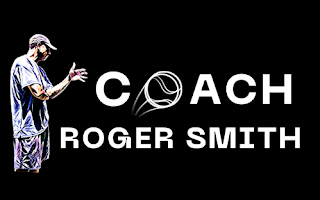The Identity Obstacles in Junior and Professional Tennis
Tennis, an intricate sport that demands physical prowess and mental fortitude, poses numerous challenges for both junior and professional players alike. One of the most significant hurdles faced by aspiring tennis players is the lack of understanding or awareness of their identity as athletes. In this blog, we explore how the absence of player identity can impede progress and growth in tennis and how embracing one's true self can lead to success.
Serena Williams
“As a Black tennis player, I looked different. I sounded different. I dressed differently. I served differently. But when I stepped onto the court, I could compete with anyone
The Core of Player Identity:
Player identity revolves around two crucial aspects: understanding one's game style and, perhaps more importantly, comprehending who they are as individuals, including what drives them as well as how to connect that drive to compete at Ideal Performance State (IPS). A comprehensive understanding of these elements is essential for any player, especially those transitioning into the professional realm.
1. Game Style & Player Identity
For junior players, finding their optimal game style and Player Identity is an ongoing process. Some players might be naturally aggressive, favoring a hard-hitting, attacking style, while others might thrive on defensive or counter punching play and strategic placement with relying on strength and endurance. Developing one's game style requires physical time, practice, and at times experimentation, however recognition of this can be truly shortened with the use of a scientific method introduced in recent years (Brain typing)
Stressed out? Trouble getting into the flow? Understanding your brain type may provide the roadmap needed to overcome these barriers and reach your fullest potential. Daniel Amen
2. Primary Purpose
Beyond one's personal identity, understanding how to ignite that drive to push that game style plays a fundamental role in a player's journey. This includes recognizing their passions, motivations, and what fuels their competitive fire. Some players may excel under pressure, thriving in intense situations, while others might find solace in consistency and steady progress. This is due to their connection to Primary Purpose.
click on link to read Dr. Stan Kovich The Importance of Passion & Purpose for Sport Success
The Significance of Brain Type and Primary Purpose:
Understanding one's "brain type" is vital in shaping a player's identity. Some individuals are instinctive, trusting their gut and intuition during high-pressure moments. Others may be analytical, relying on detailed strategies and data to make decisions on the court.
Moreover, identifying the primary purpose for playing tennis is a game-changer. Some players pursue tennis for the sheer love of the sport, while others are motivated by the desire for fame, financial rewards, or to honor their family's legacy. Knowing their true purpose helps athletes stay focused and driven throughout their careers.
The Journey to Champion's Identity and Primary Purpose:
Becoming a champion isn't just about innate talent; it's a journey of self-discovery and development. Champions are not born with all the necessary information; they learn, adapt, and grow as they progress through their careers.
1. Early Development
Junior players who start early in understanding their identity have a significant advantage. This self-awareness allows them to make informed decisions about their training, coaches, and tournament schedules. The earlier they grasp their strengths and limitations, the more time they have to refine their game and mental approach.
2. Embracing the Process
The path to embracing one's player identity is not always easy. It requires self-reflection, feedback from coaches, and the courage to be true to oneself. It's essential to be patient with this process, as it can be a rollercoaster ride of successes and setbacks. With the connection of their primary purpose, it keeps them motivated and fired up through the many ups and downs. It keeps them going!
In Conclusion:
The journey to success in junior and professional tennis is riddled with challenges, and one of the most critical obstacles is a player's lack of understanding or recognition of their identity. Discovering their game style, brain type, and primary purpose for playing can unlock their full potential as athletes. Champions stand out not only for their exceptional skills but also for their profound understanding of themselves. Aspiring tennis players should strive to connect with their inner selves early in their careers to pave the way for a brighter and more fulfilling future on the court.
The one kicker here that must be mentioned is that it takes the understanding, patience, collaboration and positive reinforcements from the whole support team.



